Literary Adaptations and Pop Culture
Literary Adaptation and Pop Culture
After the success of the film The Count of Monte Cristo (2024), let's take a look at the adaptations of great classics of French literature, some of which might surprise you!
Le comte de Monte-Cristo
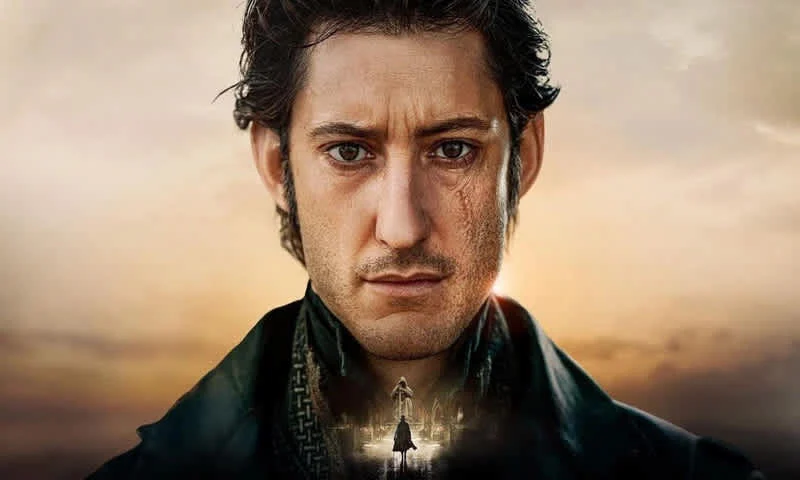
Le Comte de Monte-Cristo (2024) – Chapter 2 / Pathé Films
What is it about?
The Count of Monte Cristo (1846) is primarily a story of revenge. Set in 1815, before Napoleon's Hundred Days, it tells the story of a nineteen-year-old sailor, Edmond Dantès, who is imprisoned in the Château d'If after being betrayed by conspirators jealous of his upcoming marriage to his beloved Catalan fiancée, Mercédès.
Wrongly labeled as a Bonapartist, he is locked away for fourteen years before escaping and embarking on a quest for treasure hidden on the island of Montecristo. Using the clues from an old fellow prisoner, Edmond Dantès uncovers the treasure and uses it to create several new identities, helping those who deserve it and seeking revenge on those who stole so many years of his life.
Who is the author?
Alexandre Dumas (1802-1870) is a renowned author known for his countless literary successes such as The Three Musketeers (1844) and La Reine Margot (1845).
He is the son of Thomas Alexandre Dumas, the first general of the French army with Afro-Caribbean origins, and the father of Alexandre Dumas Fils, author of the famous novel La Dame aux Camélias (1848). A family that clearly had a fondness for the name Alexandre.
Adaptations of The Count of Monte Cristo
Film and Series
In France, writers and directors Alexandre de La Patellière and Matthieu Delaporte have adapted The Count of Monte Cristo (2024) into a film, starring Pierre Niney. It has been a critical and commercial success, a must-see at the cinema!
Comics and Manga
For manga and comic fans, Ena Moriyama offers a manga adaptation of The Count of Monte Cristo (2017, Kurokawa editions).
Jordan Mechner and Mario Alberti also publish their own version of Dumas’s work in comic book form (2022-2024, three volumes, Glénat editions).
Les Liaisons Dangereuses
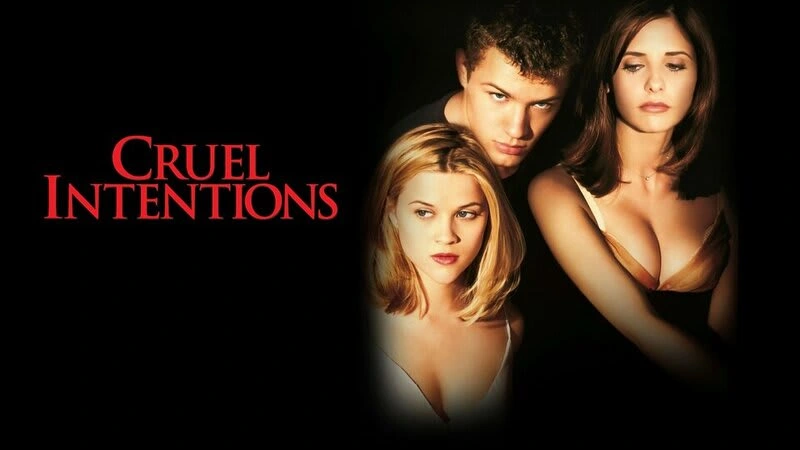
Cruel Intentions (1999) – Columbia Pictures
What is it about?
The novel Les Liaisons Dangereuses (1782) tells the scheming of the Vicomte de Valmont and the Marquise de Merteuil. The former wishes to seduce a virtuous young woman, Madame de Tourvel, while the latter seeks to corrupt a pure young girl, Cécile de Volanges. Both try to keep their actions secret to protect their reputations.
Who is the author?
Pierre Choderlos de Laclos is a lesser-known name in French literature, and for good reason: in addition to his writing career, he was a military officer! Later, he became a commissioner for the Executive Council in the Ministry of War during the revolutionary army and later aligned himself with Napoleon Bonaparte’s ideals.
Despite this, he held fairly feminist views for his time. His unfinished treatise De l’éducation des femmes criticizes the education young girls received at the time, arguing that it only prepared them for submission to their husbands. His novel Les Liaisons dangereuses also denounces the double standard, already prevalent at the time, between men and women regarding conquests and romantic relationships.
The novel caused a scandal when it was first published. Initially published anonymously, the author's identity was quickly discovered. Since Pierre Choderlos de Laclos was a “maréchal de camp” when Les Liaisons dangereuses was released, he was sent to La Rochelle as punishment by his superiors, where he met the love of his life, his future wife, and the mother of his three children, Marie-Soulange Duperré.
Adaptations of Les Liaisons dangereuses
Film and Series
One of the most famous adaptations of French literature for movie lovers: Cruel Intentions (1999), directed by Roger Kumble, starring Sarah Michelle Gellar and Reese Witherspoon in the lead roles. A modern and current adaptation of the film will soon be released as a series on Amazon Prime Video.
For K-drama fans, the South Korean drama Great Seducer (2018) is inspired by Laclos’s novel.
Comics and Manga
For manga enthusiasts, Chiho Saitô offers her interpretation in two volumes (2010, Soleil editions).
Madame Bovary
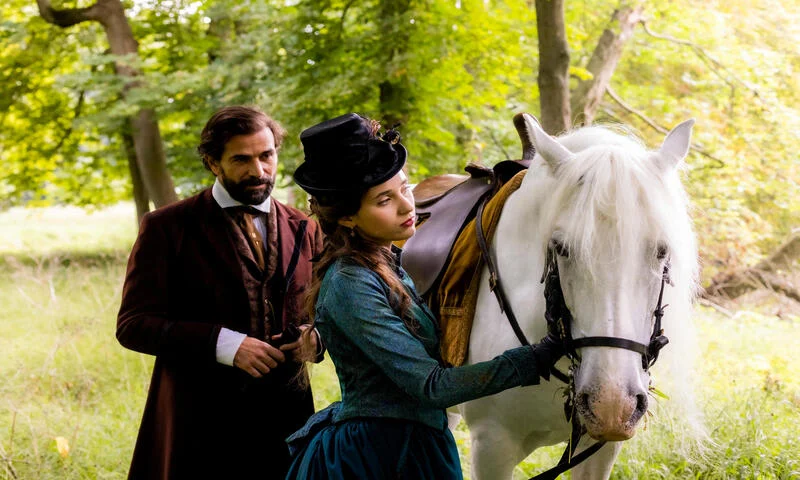
Emma Bovary (2021) – Barjac Productions
What is it about?
Madame Bovary (1857) tells the story of Emma Bovary's lonely provincial romances as she tries to escape a dull life by engaging in affairs and extravagant spending. The author was inspired by the life of Delphine Delamare, a woman buried in debt and abandoned by both her husband and lover, before ultimately taking her own life.
Who is the author?
Gustave Flaubert (1821-1880) was a French writer known for his novels Sentimental Education (1869) and Madame Bovary (1857). However, his poem The Temptation of Saint Anthony was unsuccessful.
Upon the publication of Madame Bovary, Flaubert faced a trial for "offenses against public and religious morality." He won the case, and the book was not banned.
Like Dangerous Liaisons, Madame Bovary tackles taboo subjects that polite society of the time preferred to avoid.
Adaptations of Madame Bovary
Film and Series
The 2021 TV film Emma Bovary (France Télévisions) tells the story of Flaubert's trial for “outrage to public and religious morality” following the book's release. Alternating between scenes of the trial and the novel, the film offers an in-depth analysis rather than a traditional adaptation, serving as a way to understand the novel better.
A film adaptation, Madame Bovary (2014), a Belgian, German, and
American co-production, stars Australian-Polish actress Mia Wasikowska in the lead role.
Comics and Manga
For readers, a manga adaptation by Yumiko Igarashi was completed in 1997 and published in full in France in 2013.
Daniel Bardet and Michel Janvier published their graphic novel version of the book in 2008 (Glénat editions).
Germinal
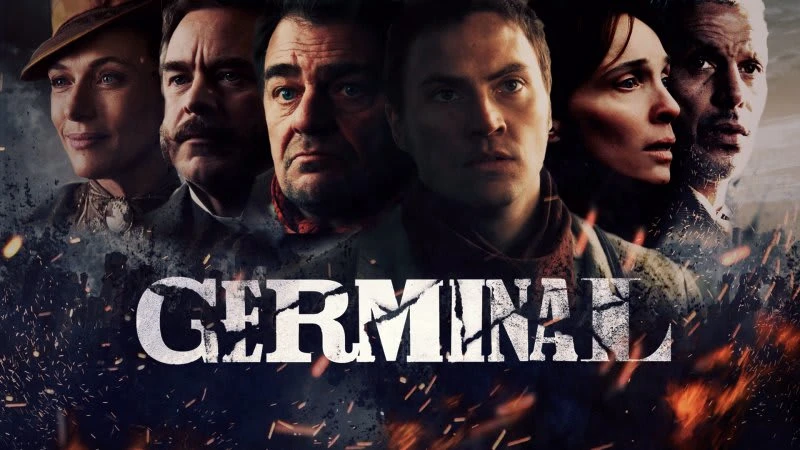
Germinal (2021) – France Télévisions
What is it about?
Germinal (1885) is primarily a novel about workers’ revolt. Inspired by the historic strike of the Anzin miners, it tells the story of Étienne Lantier, who, after losing his job, is hired at the Montsou mine. Facing extreme working conditions, he joins his colleagues in a revolt when the mining company decides to cut their wages.
Who is the author?
Émile Zola (1840-1902) was a renowned French author known for his numerous novels, including Au Bonheur des Dames (1883), which offers a more positive view of work and capitalist society’s transformation than Germinal.
Zola is also famous for his unforgettable article J'accuse…! written as an open letter to the President of the Republic, Félix Faure. In this article, he defended Alfred Dreyfus, a French artillery officer falsely accused of espionage for Germany—allegations heavily tainted by anti-Semitism.
Zola was brought to trial and forced into exile because of his letter, but his trial eventually led to the revision of Dreyfus's life sentence, and Dreyfus was ultimately pardoned and exonerated.
Adaptations of Germinal
Film and Series
A mini-series adaptation (France Télévisions) was directed by David Hourrègue in 2021.
Comics and Manga
A two-volume comic by Philippe Chanoinat and Jean-Michel Arroyo was published in 2010 by Glénat editions.
Les Misérables
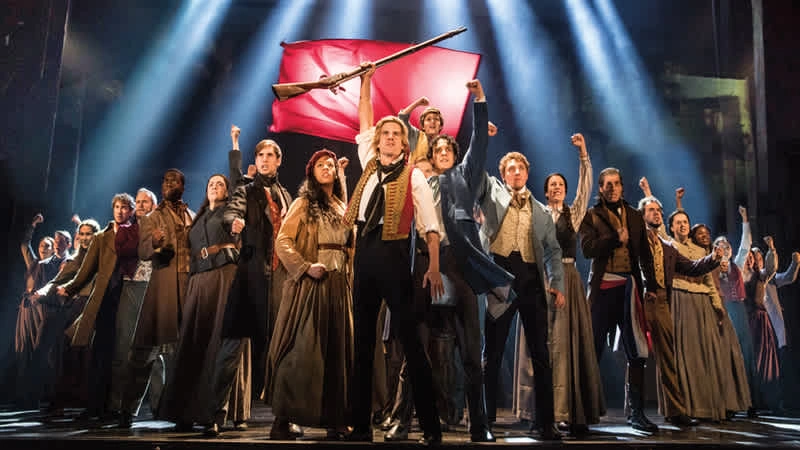
Les Misérables (2018) – Place des Arts de Montréal (*Matthew Murphy*)
What is it about?
One of Victor Hugo's most iconic works, Les Misérables (1862) is actually a series of five novels.
The story spans from the Battle of Waterloo to the June Rebellion of 1832. During these seventeen years, readers follow the life of Jean Valjean, who encounters many remarkable characters. Among them is Cosette, a young girl he takes under his care after the early death of her mother, Fantine.
Who is the author?
The renowned Victor Hugo (1802-1885) authored several classics across various genres (essays, poems, novels).
Notable works include The Last Day of a Condemned Man (1829), a novel advocating against the death penalty, and The Hunchback of Notre-Dame (1831).
Another of his famous works is the poem Tomorrow, at Dawn (from The Contemplations), dedicated to his daughter Léopoldine, who drowned.
Adaptations of Les Misérables
Film, Series, and Musical
The Broadway musical, known as "Les Mis" among English-speaking fans, was adapted into a 2012 film by Tom Hooper, starring Hugh Jackman and Anne Hathaway.
A fifty-two-episode anime aired in Japan in 2007 under the title Les Misérables: Shōjo Cosette.
Comics and Manga
A comic adaptation (Jungle editions) was released in 2019, led by Maxe L’Hermenier and Siamh.
There are two manga adaptations: one by mangaka Takahiro Arai (eight volumes since 2013) and another published by Udon in 2014.
Video Games
A mobile and tablet game titled Les Misérables: Cosette’s Fate was released in 2013.
Les Trois Mousquetaires
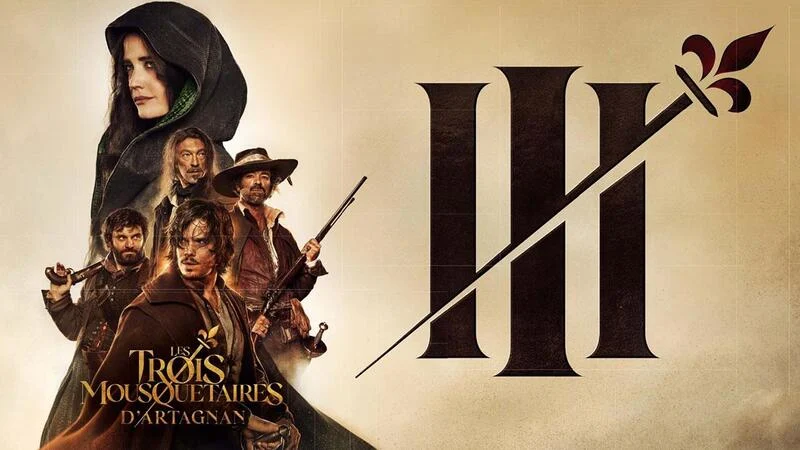
Les Trois Mousquetaires : D’Artagnan (2023) – Chapter 2 / Pathé Films
What is it about?
The Three Musketeers (1844) is an epic, action-filled novel that follows the adventures of d'Artagnan and his future friends and allies, Athos, Porthos, and Aramis. In the service of King Louis XIII, the four musketeers must protect the reputation of Anne of Austria, who is targeted by Cardinal Richelieu.
Who is the author?
Alexandre Dumas (1802-1870), also author of The Count of Monte Cristo (see earlier in the article).
Adaptations of The Three Musketeers
Film and Series
Among film adaptations, Martin Bourboulon’s version stands out; the first installment of his trilogy was released in 2023, with François Civil, Vincent Cassel, Romain Duris, and Pio Marmaï as the musketeers, and Eva Green as Milady de Winter.
Internationally, the book was adapted into a series by the British (The Musketeers, 2014-2016) and also by South Koreans (2014).
Comics and Manga
A graphic novel focusing on Milady, Milady or the Mystery of the Musketeers, created by Sylvain Venayre and Frédéric Bihel, was published in 2019 (Futuropolis editions).
Of particular interest, a manga based on Martin Bourboulon’s film trilogy is currently in production. The first volume, The Three Musketeers – D'Artagnan, illustrated by Cédric Tchao and written by Néjib, was published in 2023 (Casterman editions).
Arsène Lupin

Lupin (2021) – Netflix
What is it about?
Beginning in 1905, the story focuses on the famous Arsène Lupin, a gentleman thief of the Belle Époque and the Roaring Twenties. He also solves crimes using his talent for disguise and ability to assume multiple identities. From thief, he eventually becomes a detective.
Who is the author?
Maurice Leblanc (1864-1941) is often compared to Arthur Conan Doyle, the creator of the famous detective Sherlock Holmes. Like Doyle, Leblanc even attempted to kill off his character in one story before bringing him back to life.
Adaptations of Arsène Lupin
Film and Series
The most famous adaptation is the Netflix series Lupin (2021), with Omar Sy in the lead role. Earlier, another adaptation featuring Romain Duris was released in 2004, directed by Jean-Paul Salomé.
Two Japanese animated films pay tribute to the famous thief: Kaitō Lupin – 813 no Nazo (1979) and Lupin Tai Holmes (1981). A French-Canadian animated series, The Exploits of Arsène Lupin, was released in 1996.
Comics and Manga
Many comic adaptations have been created, with recent releases including The 1,000 Mysteries of Arsène Lupin (2018, Cerises et Coquelicots editions) and Arsène Lupin: Origins (2016, Rue des Sèvres editions).
The latest manga adaptation is Kaitô Lupin Den – Adventurer by Takashi Morita, with the final volume published in 2012 (Kurokawa editions).
In animation, Hayao Miyazaki directed The Castle of Cagliostro (1979).
Video Games
The French studio Microids will release an investigative video game titled Arsène Lupin – Thief One Day on October 17, 2024, available on all platforms.
La Peste

La Peste (2024) – Siècle Productions / Umedia
What is it about?
The Plague (1947) tells the story of the onset of a plague epidemic in the streets of Oran (in Algeria), brought by rats. The narrative centers on various communities trying to survive this ordeal: religious groups who interpret the plague as divine punishment, and profiteers who run illegal businesses amid the pandemic. Among these communities are those resigned to their new life, those who try to fight the disease, flee, or, more surprisingly, write their memoirs.
Who is the author?
Albert Camus (1913-1960) is known for his novels The Stranger (1942) and The Plague (1947). He received the Nobel Prize in Literature in 1957.
A prominent activist, politically engaged in numerous causes, he was also the editor-in-chief of the underground newspaper Combat, a press organ of the Resistance movement during World War II.
Adaptations of The Plague by Camus
Film and Series
The novel was adapted into a four-episode mini-series (2024, France Télévisions).
Comics and Manga
It was also adapted into a four-volume manga (2021, Michel Lafon) by author Ryota Kurumado.
Notre-Dame de Paris
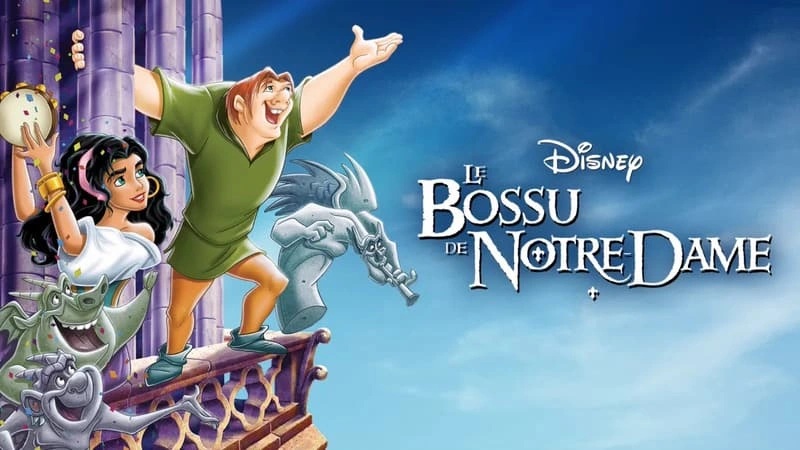
Le Bossu de Notre-Dame (1996) – Walt Disney Pictures
What is it about?
Notre-Dame de Paris (1831) follows Quasimodo, a young hunchback who lives within the walls of Notre Dame Cathedral, where he works as a bell ringer. He falls in love with Esmeralda, a young Romani dancer who performs to make a living. However, she is desired by several men, including Captain Phoebus de Châteaupers and Archdeacon Claude Frollo. The archdeacon’s interest in Esmeralda turns into an obsession, putting her life in danger—but Quasimodo will try to save her.
Who is the author?
Victor Hugo (1802-1885), also the author of the novel series Les Misérables (see earlier in the article).
Adaptations of Notre-Dame de Paris
Film, Musical, and Series
The most famous adaptation of Notre-Dame de Paris is Disney's 1996 animated version, as well as the French and Quebec musical (1998) that brought singers Garou, Patrick Fiori, Julie Zenatti, and Hélène Ségara to public attention.
A live-action adaptation of the Disney film is set to be directed by Tim Burton, although no additional information has been released yet.
The TV movie The Hunchback was also produced in 1997, starring Salma Hayek as Esmeralda.
Comics, Manga, and Graphic Novel
Two graphic novels were published five years apart: Notre-Dame (2012, two volumes, Glénat editions), written by Robin Recht and illustrated by Jean Bastide, and Notre-Dame de Paris (2017, Glénat editions), written by Claude Carré and illustrated by Jean-Marie Michaud.
Anoter graphic novel titled Victor Hugo – Notre-Dame de Paris was published at the end of 2023.
Le Petit Prince
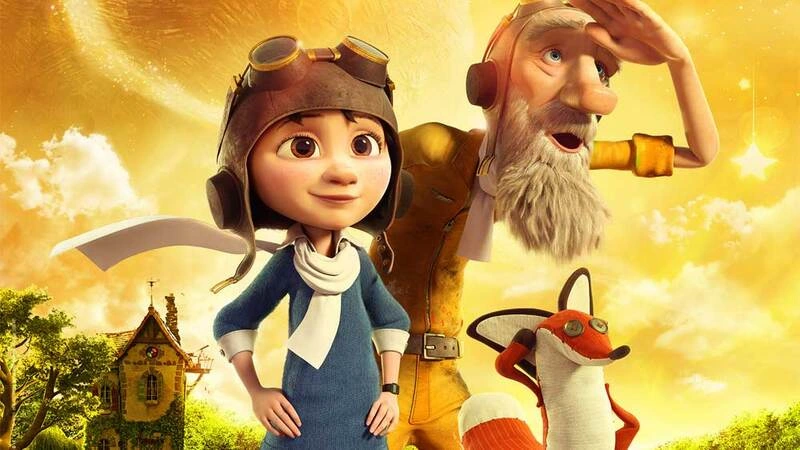
Le Petit Prince (2015) – Paramount Pictures France
What is it about?
The Little Prince (1943) is primarily a children’s book. It tells the dreamlike story of a pilot who, after crashing in the Sahara Desert, meets a peculiar character, the Little Prince, who asks him to draw a sheep. Through this encounter, the pilot discovers various characters who represent distinctly human concepts.
Who is the author?
Antoine de Saint-Exupéry (1900-1944) is also known for his novel Night Flight (1931) and his collection of autobiographical essays, Wind, Sand and Stars (1939).
A war correspondent and aviator, Saint-Exupéry joined the air force and was declared dead for France on July 31, 1944, after his plane disappeared at sea. He was finally identified nearly 60 years later, in September 2003, off the coast of Marseille.
Adaptations of The Little Prince
Film and Series
A French animated film directed by Mark Osborne was released in 2015. It presents the story of the Little Prince alongside that of a young girl who discovers the magical world of the Little Prince through an aviator, her eccentric neighbor.
A Japanese animated series of thirty-nine episodes was released in 1978 under the title Hoshi no Ōjisama: Puchi Puransu.
Comic and Manga
The manga Saint-Exupéry, focusing not on The Little Prince but on the life of its author, was published in 2023 by Nobi Nobi. The manga is illustrated by Osamu Hiramatsu and written by Tetsuya Kurosawa and Ichiro Suzuki.
Still many adaptations to discover !
The examples mentioned in this article represent only a small fraction of existing adaptations of great French literary classics. Literature continues to inspire creators across increasingly contemporary and surprising mediums—because, after all, it’s also part of pop culture!
(Originally written and published in French)
Like this project
Posted Mar 24, 2025
Following the success of the film adaptation of The Count of Monte Cristo, we take a look back at the classics of French literature adapted for the cinema.
Likes
0
Views
3






